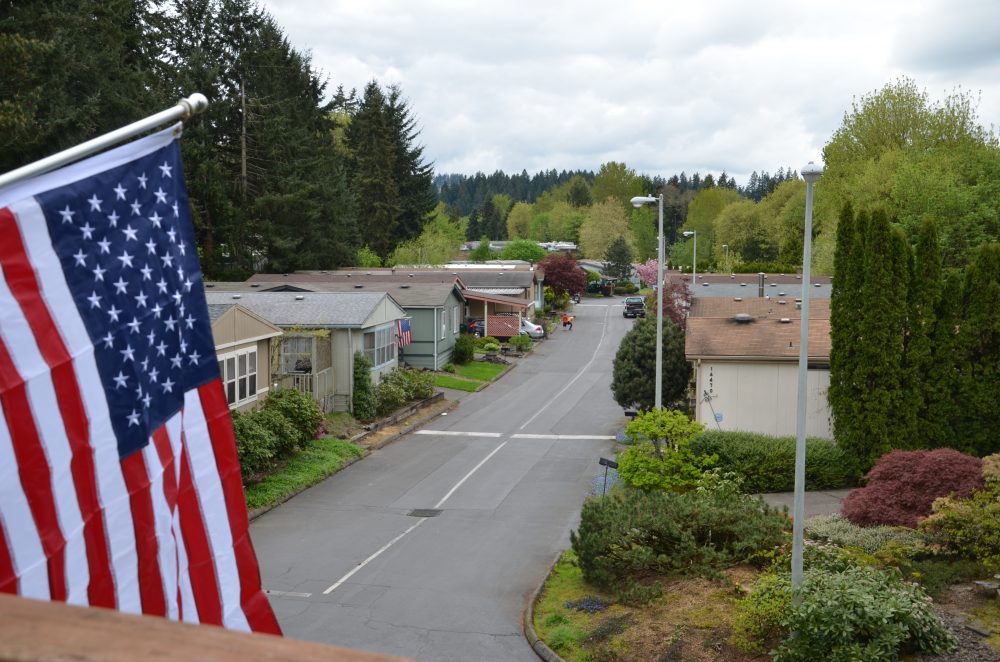
The Clackamas River Community Cooperative in Clackamas, Oregon. Residents purchased their 76-home neighborhood Oct. 26, 2012 for $5 million. Clackamas River leaders work with CASA of Oregon for ongoing coaching and technical assistance. Photo courtesy of ROC USA/Mike Bullard
It was more than a decade ago when the National Housing Institute published a landmark report on shared-equity homeownership, or resale-restricted, owner-occupied housing for lower-income households that remains affordable in perpetuity. There are multiple models for providing shared-equity homes, including shared-equity cooperatives, limited-equity resident-owned communities, community land trusts, and deed-restricted/below market-rate programs.
While there have been real strides in the field and some pockets of growth, we have not seen the proliferation of this model of homeownership to the extent that many of us had hoped.
There is growing awareness of shared-equity models, especially community land trusts (CLTs), and mounting interest among housing advocates, policy makers, and community developers for making affordability last longer. There has also been an uptick in the number of manufactured housing communities, Habitat for Humanity affiliates, other nonprofits, and inclusionary housing programs that have adopted or are supporting shared-equity models. In fact, the Lincoln Institute of Land Policy recently published the first U.S. census of inclusionary housing programs that I co-authored with Vince Wang. We found that roughly 90 percent of inclusionary programs that involve owner-occupied housing use shared equity to preserve the affordability of units. Nevertheless, as I present below, the growth of shared-equity homes appears to be relatively limited.
However, now is a time when many parts of the country could benefit from having a larger stock of shared-equity homes. Community leaders, advocates, and policy makers in many places are trying to address racial and economic segregation in their communities. Since shared-equity homes remain affordable in perpetuity, this housing stock is not lost over time like most affordable housing. In fact, it advances integration by ensuring that affordable homes remain in neighborhoods that are experiencing gentrification or that are rich in community assets.
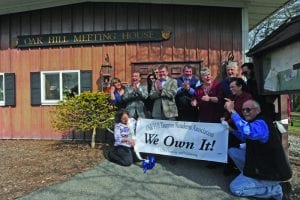
Oak Hill Taunton Residents Association members celebrate the purchase of their 247-site manufactured home community.The residents purchased their Taunton, Massachusetts neighborhood March 31, 2016 for $10 million. Photo courtesy of Taunton Daily Gazette/Mike Gay
Many people are also trying to find solutions to recover from the Great Recession by improving the rates of homeownership for lower-income households and people of color so that families can build wealth. Shared equity provides greater access to homeownership by offering far more affordable purchase options than typical down payment or closing-cost assistance programs. And the model does this while more prudently using public dollars for a larger impact.
That’s because shared-equity homeownership is a self-sustaining model that takes a one-time public investment to make a home affordable and then restricts the prices for which it may be sold to keep it affordable for subsequent lower-income families who purchase the home, sale after sale. The model balances wealth-building for families who would otherwise be unable to afford owning a home with preserving the community’s investment. Maximizing the impact of our public dollars is critical in the current climate where federal funding for affordable housing is under attack.
So why aren’t the number of shared-equity homes proliferating, especially for certain models? What is the current state of shared-equity homeownership?
Shared-Equity Cooperatives
Shared-equity cooperatives are traditionally standalone corporations that are owned collectively by low- and moderate-income residents who agree to resale restrictions, which keep the properties affordable over time. In 2015, the Urban Homesteading Assistance Board (UHAB) documented limited-equity, zero-equity, and other co-op models that emphasize affordability in perpetuity. Research in the 1990s by the National Association of Housing Cooperatives and the late Roger Wilcox had estimated that approximately 425,000 limited-equity housing cooperatives had been produced. Updating this research, UHAB accounted for 300,000 of those units and found that only 166,608 remained shared-equity co-ops. The original count was an overestimate, and the current research inevitably did not capture the entire universe of shared-equity cooperatives; however, close to half of the accounted-for units had reverted to market-rate housing, remain relatively affordable but no longer have resale restrictions, or were restructured to a different disposition.
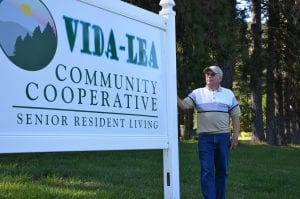
Travis Blythe, a homeowner and ROC leader, stands outside Vida-Lea Community Cooperative in Leaburg, Oregon. Residents there purchased the 34-home neighborhood Feb. 16, 2012 for $1.275 million. Photo courtesy of ROC USA/ Mike Bullard
The largest proportion of shared-equity cooperatives is in New York City, which accounts for close to 100,000 units. Other states with thousands of documented shared-equity co-ops units include: California, Connecticut, Massachusetts, Minnesota, as well as Washington, D.C.
Alexander Roesch of the Urban Homesteading Assistance Board, which is the biggest affordable co-op developer in New York City, says that since 2005, UHAB has developed 54 limited-equity co-ops encompassing 1,425 co-op units. However, relatively few new shared-equity cooperatives have been created in places where co-ops were growing in the 1960s and ’70s. And the new units that have been created have typically been through converting existing buildings into shared equity co-ops.
So why are we losing older shared-equity cooperatives and acquiring co-op units at much slower rates than in the past? Shared-equity cooperatives have been lost over time predominantly due to restrictions expiring in federal programs so properties convert to market-rate, or when it’s been impossible for co-ops to obtain financing or grants for preservation and recapitalization. That is why nonprofit sponsors or stewards, like UHAB, are so critical for assisting residents in: establishing the cooperative and its legal documents, policies, and procedures; securing development financing, permanent financing, and the initial subsidy to make the property affordable; and providing ongoing support and monitoring for successful resident governance, property management, and affordability compliance and preservation. Third-party, mission-driven stewards help ensure residents’ interests are balanced with managing the asset and preserving the affordability.
However, these stewards cannot expand shared-equity co-op opportunities without public support. Providing training, technical assistance, and stewards requires funding. A recent Shelterforce article acknowledges that shared-equity co-ops do not have the public support they once had through below market-rate financing from HUD or state programs. It is tremendously challenging for affordable co-ops to access financing for blanket mortgages and share loans (especially with the terms they need). It’s even harder to access the equity they need to meet underwriting standards for the few financial products that do exist. “But there is nothing that makes co-op development more expensive than other affordable housing models,” says Roesch. “I think there is a lack of understanding and political will to make cooperatives. The Mayor’s Office in NYC says they’ve created over 25,000 units of new affordable housing, and I think all those units could be co-op ownership but that is not the model people are using. Instead, they’re all rentals.”
In October 2017, Mayor Bill de Blasio announced that $250 million would be used to prevent subsidized Mitchell-Lama developments from being converted to market-rate apartments. Hopefully, some of this will go toward preserving shared-equity co-ops.
Limited-Equity Resident-Owned Communities
Resident-owned communities (ROCs) are neighborhoods of manufactured homes, where plots of land, better known as “pads,” are owned cooperatively by a community of residents rather than an outside landlord. The use of the limited-equity cooperative model in manufactured housing communities provides lower-income homeowners with residential stability and protection from rapidly escalating pad rents that can make housing unaffordable. It also gives residents the ability to make necessary health and safety improvements that private owners often defer by selling the mobile home park.
Limited-equity ROCs began in New Hampshire and California in the 1980s through nonprofit and government programs that helped communities with the equity they needed to get a loan to purchase a mobile home park. New York and Massachusetts started to support the formation of limited-equity ROCs in the 1990s followed by Minnesota in the 2000s. Launching in 2008, ROC USA developed its national network of nonprofits and source of capital to make limited-equity ROCs viable nationwide. Like UHAB for shared equity co-ops in NYC, ROC USA and its network act as the stewards for limited-equity ROCs across the country.
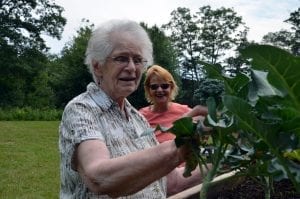
From left, Gwen Swank and Norma Sprague, ROC leaders at Pemaquid Villas, tend to the community garden in their 25-site manufactured home community. The residents purchased their Bristol, Maine, neighborhood April 29, 2015 for $325,000. Photo courtesy of ROC USA/Mike Bullard
With nine certified technical assistance providers, the ROC USA network represents a total of 210 ROCs that include 13,400 homes in 14 states, such as New York, Minnesota, Wisconsin, Texas, Montana, Utah, Oregon, and Washington. Year-over-year growth in ROCs has been steadily increasing since 2010, reaching 17 in 2016, which is expected to continue as more states and technical assistance providers are brought on board.
When asked what factors contributed to such growth since 2008, Paul Bradley, president of ROC USA says, “We believed—and indeed it’s been proven—that many community owners are happy to sell to the residents as long as the process is efficient and the money is the same.” ROC USA has streamlined the process by providing due diligence support so homeowners can make an informed democratic choice to purchase and obtain financing for acquisition and rehab through ROC USA’s national community development financial institution (CDFI). Impressively, ROC USA Capital has generated a total of $183 million in permanent financing over nine and a half years. Its technical assistance providers are regionally focused, entrepreneurial developers who work on time frames that are competitive with the commercial market.
A few states, like Connecticut, Florida, and New Hampshire, have resident opportunity-to-purchase laws that are activated when an owner is selling to a third party, which gives residents time to organize and evaluate whether a purchase is viable. Bradley notes, “If state legislatures are so inclined to give homeowners the opportunity, great. If not, we are active in the industry and [we’re] finding a good number of owners who like the idea [of] selling to a co-op.” Regardless of state policy, according to Bradley, ROC USA needs additional equity to grow ROC USA capital and funding to expand its capacity to provide technical assistance. There are roughly 50,000 mobile home communities in the country; many more of them could benefit from becoming limited-equity ROCs.
Community Land Trusts
A community land trust is a nonprofit corporation that develops and stewards affordable housing, community gardens, and commercial spaces on behalf of a community. CLTs are best known for providing shared-equity homes by leasing land at a nominal price to a lower-income person who then purchases the home at an affordable price. Holding land in trust that is community controlled is an idea that appeals to many communities. And arguably, CLTs have garnered the most public attention of all the shared-equity models.
The first CLT was established in Albany, Georgia, in 1969. The growth of CLTs picked up significantly in the 1990s. Grounded Solutions Network (formerly the National Community Land Trust Network) is a national nonprofit member organization that supports and fosters new and existing CLTs—as well as other permanently affordable housing programs—with training, technical assistance, research, and policy development and advocacy. In the National Housing Institute’s landmark report, John Emmeus Davis reported that there were 162 CLTs, 29 start-up CLTs without real estate, and 15 groups planning incorporation as of May 2006 with somewhere between 5,000 to 9,000 owner-occupied homes. Despite the growing reputation, these numbers have not drastically changed since then, according to our best estimates extrapolated from information collected by Grounded Solutions Network members and secondary data sources. Our best estimate today is that there are approximately 225 CLTs; of those, about 60 organizations are start-ups or have no units. Hence, there are roughly 165 CLTs with homeownership units, totaling approximately 12,000 homes.
So why the slow growth in owner-occupied homes on land held by CLTs? Like shared-equity co-ops, the primary factor is the lack of subsidy dollars to make more homes affordable. The subsidy is needed to cover the difference between the fair market value or construction/acquisition-rehab costs of a home and the sales price that is affordable to a lower-income family. Challenges in obtaining subsidy dollars is in part explained by shrinking or relatively level funding for federal programs, especially HOME, SHOP, and CDBG. Beyond the declining or relatively stagnant funding, however, is a shift in how jurisdictions are using these flexible programs. After the foreclosure crisis and the ensuing rises in rents across most of the country, leaders in many jurisdictions are choosing to prioritize affordable rentals over owner-occupied homes with their federal program dollars. A priority is also now put on creating more affordable rentals in many state and local funding opportunities as well. Exacerbating this challenge is that, as many housing markets have heated up, the amount of subsidy needed to make homes affordable for purchase has grown since income has not kept pace with escalating housing values.
Even if the federal policy picture were brighter, it is not enough for CLTs to compete for program dollars with other nonprofit affordable housing developers to reach substantial scale. Rather, “We have learned that it is vital for state or local governments to prioritize or require lasting affordability in their resources, policies, and programs for a meaningful amount of homes to be held in trust or stay affordable,” says Rachel Silver, chief operating officer of Grounded Solutions Network. Obtaining the buy-in of state or local governments for supporting the mission and work of the CLT has shown to be necessary for having and growing a sizable portfolio.
The good news is that, as the reputation of CLTs has grown, the desire for CLT development is coming from both grassroots community groups as well as governments, and that holds great promise for successful implementation and impact. Silver continued, “In the past year, we’ve received increased demand in places like Houston and Nashville to work with both government and community leadership on CLT-City partnerships that have the potential to create hundreds of desperately needed CLT homes.”
Deed-Restricted/Below Market-Rate Programs
Inclusionary housing policies are land use policies that incentivize or require developers to produce affordable housing or pay a fee that will be used to create affordable housing when new development is built. When these policies apply to for-sale development, the vast majority of governments have elected to use shared- equity homeownership models, typically through the use of a deed restriction that restricts the price for which the home may be sold to a subsequent lower-income household in the future. These affordable homeownership programs are often referred to as “below market-rate” programs. These programs hold promise as an effective local strategy for fostering inclusive communities, as the affordable homes are often built on the site of the new development in areas that are abundant—or quickly becoming rich—in opportunity.
The first inclusionary housing policies were adopted in Fairfax County, Virginia, and Montgomery County, Maryland, in the early 1970s. However, the states did not adopt a shared-equity homeownership program until decades later. At that time, officials realized that the policies’ short-term affordability restrictions were resulting in the loss of most of the affordable housing they worked so hard to create. Luckily, many jurisdictions that have adopted policies over time are also implementing shared-equity homeownership models either at the outset of policy adoption or through policy amendments.
Grounded Solutions Network provides technical assistance to jurisdictions adopting or improving their inclusionary policies and supports existing programs with training, resources, research, and advocacy. The study Vince Wang and I conducted at Grounded Solutions Network undertook a national census of inclusionary housing programs. It identified 886 jurisdictions with inclusionary housing programs in 25 states and the District of Columbia at the end of 2016. The vast majority of jurisdictions with inclusionary housing are located in New Jersey (45 percent), Massachusetts (27 percent), and California (17 percent), and many programs in these states have produced shared-equity homes. The study documented 50,000 affordable homeownership units in 443 jurisdictions—although this is certainly an underestimate due to missing data.
A subsample of 273 inclusionary housing programs provided information on their characteristics. Approximately 90 percent of programs applying to rental and/or for-sale development reported affordability terms of 30 years or longer, and close to that percentage are using shared-equity homeownership models. This trend in local inclusionary housing programs differs from the relatively short-term affordability requirements in federal housing programs, which range from 5 to 30 years. The embrace of lasting affordability requirements by local governments illustrates their commitment to preserving the affordable housing stock in their communities as well as the more prudent use of public and private investment in affordable housing. Ultimately, this strategy to retain affordability substantially increases impact, as more families can be served over time by these affordable homes.
Still it is unknown how many of the below market-rate homes produced by inclusionary housing policies have, in fact, been preserved over time. Longer affordability controls are not enough to ensure that homes remain affordable without oversight and support. Below market-rate programs tend to “come late to the game” in terms of stewardship. Homeowners must be educated pre-purchase and the portfolio of affordable homes must be managed and monitored effectively. It was clear from the Grounded Solutions Network study that many inclusionary housing programs are inadequately tracking affordable properties and the efficacy of their programs. One solution that has worked in some jurisdictions is partnering with an experienced, strong local CLT or nonprofit that has the capacity to steward the affordable housing units created by their inclusionary housing policies (e.g. Alameda and Petaluma, California; Chapel Hill, North Carolina; and Burlington, Vermont).
Over one quarter of inclusionary housing policies were adopted in the last seven years and more than a dozen municipalities are now considering adoption. Robust growth of these policies makes sense, as many markets are heating up, experiencing increased construction, and trying to address their affordability challenges. Albeit at a modest rate, this is a win for expanding the number of shared-equity homes because inclusionary housing programs inherently rely upon new construction for production. However, it is important to note that the impact of these local policies will slow as markets cool down. Nevertheless, unlike most forms of shared-equity homeownership—which predominantly rely upon grants, subsidies, and/or land donations—inclusionary housing programs are “value capture” strategies, which leverage public investments in communities by recapturing it through private developers’ profits. Hence, inclusionary housing programs are experiencing growth and producing more because they are not as reliant upon real public dollars.
Significant Growth Will Require Subsidy, Financing, and Political Buy-in
Taken together, there are close to 250,000 shared-equity homes that have been documented to exist across the United States. Each model is distinct in terms of its history, pattern of expansion, and the people or places it tends to serve. However, these models have not grown and do not grow at equal rates today. Shared-equity homes within limited-equity ROCs and below market-rate programs from inclusionary housing policies have solidly expanded over the past decade but for distinct reasons. Meanwhile, shared-equity homes within co-ops and community land trusts have seen modest growth, which is predominantly due to their reliance on public subsidies that have declined or do not favor these models.
Limited-equity ROCs are a relatively young model, expanding at an impressive clip that is faster than other shared equity models in the past decade. This is largely attributed to ROC USA and its network being able to help homeowners compete in the market by buying at competitive prices and financing communities through ROC USA Capital. Nevertheless, the model could be expanding faster with more opportunity-to-purchase legislation, more access to capacity-building support, and additional equity.
The number of homes in below-market rate programs is also steadily expanding. This is due to the ongoing adoption and improvement of inclusionary housing policies, which is certainly being driven by rising housing values in many places. If more for-sale units were being built—rather than higher-end rental developments—then a greater number of shared-equity homes would have been produced over the last decade in many cities (which may happen in the future). Another critical factor to the growth of shared-equity homes produced from inclusionary housing policies is that they predominantly utilize “value capture” strategies and monetize incentives for developers (such as density bonuses or expedited permitting) to create affordable housing, which does not require material subsidies.
The two forms of shared equity that frequently require project-by-project subsidies—shared-equity co-ops and community land trusts—have minimally expanded or converted new properties in the last decade. In the past, co-ops experienced significant public support, which waned in the ’80s after eradication of federally supportive tax treatment and financing, although support on state and local levels continued in some places, such as New York City, up until the foreclosure crisis and Great Recession. Notably, shared-equity co-ops proliferated when they were in a climate more like what limited-equity ROCs experience today; they had access to long-term, low-interest financing that did not require substantial equity (if any). Imagine the awesome proliferation of ROCs and co-ops that would be possible if large-scale federal support was made available today. With the current financing options that are available for shared-equity co-ops and limited-equity ROCs, however, more grant dollars or equity are needed to increase the number of units.
The story for owner-occupied homes in community land trusts is similar: Grant funding is needed to “buy down” the price of homes or purchase land, and subsequently, make it possible to provide homes at affordable prices. In many markets, the funds needed per property are relatively costly (ranging from roughly 20 to 50 percent of the fair market value of the home and land). Unfortunately, federal funding for owner-occupied affordable housing is quite limited and local or state funding are not remotely sufficient to address the need. Furthermore, public funding programs often prioritize “bang for the buck” in competitive grant applications, meaning that the lowest cost requested per unit will be more likely to receive funding. It is rare that these programs place value on how that one-time public investment—albeit larger on the front end—will result in a home that is affordable in perpetuity, serving families for generations to come. Imagine how many more permanently affordable homes would exist today if federal, state, and local funding programs prioritized stable homeownership and the efficient use of their public investment to maximize impact.
Generally speaking, shared-equity programs—despite the model—are in need of better access to financing as well as equity. To address the former, it is important to realize that the financing challenges are different across models. Limited-equity ROCs need greater access to favorable home financing, especially chattel. Shared- equity co-ops need greater access to blanket financing and share loans with much more favorable terms and liquidity from the secondary market. Below market-rate homes created by inclusionary housing policies and community land trusts need their homebuyers to have mainstream access to home purchase and refinance loans.
Unfortunately, long-term efforts to gain access to FHA-insured mortgages have not yielded regulatory and policy changes at HUD. This is particularly concerning since FHA is the dominant source of mortgages for persons of color and lower-income individuals. Additionally, the backlash to the foreclosure crisis has resulted in an extreme credit crunch, making it difficult for prospective buyers of shared- equity homes to qualify for mortgages. As highlighted in a recent Shelterforce article, the Federal Housing Finance Agency’s newly implemented duty-to-serve rule holds great promise for increasing liquidity in the market for buyers of shared- equity and manufactured homes. Fannie Mae and Freddie Mac have committed to robust activities to increase mortgage-financing opportunities for shared-equity buyers, so access to single-family mortgages is one challenge that is expected to diminish significantly in the next few years.
In order to increase access to financing and subsidies, political buy-in and formalized support from federal, state, and/or local governments and their policies are critical to advancing scale for all shared-equity models. For instance, inclusionary housing policies or housing trust fund policies may require lasting affordability, which would then ensure that funds going toward homeownership would be preserved through shared-equity models. It is in political climates where there is deep buy-in to building and preserving affordable housing that shared-equity programs have expanded to have meaningful community impact, such as Burlington, Vermont, and Boulder, Colorado. It is not enough for CLTs or other shared-equity programs to compete like any other affordable housing developer for local, state, and federal resources.
So what have we learned while making the case to local policymakers recently? The good news is that we are rarely responding to the questions “What is a community land trust?” or “What is a resident-owned community?” The bad news is that there are skeptics of shared-equity homeownership models within policy-making circles who understand the basics of the model but less about why the model is important. For instance, some local policy makers are quick to air their concerns over limiting wealth-building, the “bang for the buck,” or impeding development by requiring affordable housing or caving to NIMBYism. However, the need to protect our public investments in affordable housing and how this strategy can enable inclusive communities is often overlooked.
It is time to win over more politicians and government leaders through social and economic arguments that result in lasting affordability as a priority on the political agenda. There is an easy argument to be made that slightly larger initial investments now will ultimately save the public more money later while maximizing impact since shared-equity homes serve lower-income families. There is an easy argument to make that affordable housing should contribute to the economic health of families and the community at large, and shared-equity models do this by protecting a stock of affordable homes in asset-rich neighborhoods while enabling working families to build wealth and contribute to their community. There is an easy argument to make that private developers and land owners benefit from public investments in things like schools and transit, and therefore, should give back some public benefit through the creation of below market-rate homes.
Shared-equity homeownership offers smarter, more prudent use of public resources; results in bigger, better outcomes that help more families build wealth through owning a home; and it provides greater community impact by permanently incorporating families with modest incomes into revitalizing neighborhoods and neighborhoods of opportunity. All of this benefits the social fabric and economic vitality of any town or city. (For some supporting data, view Grounded Solutions’ HomeKeeper National Data Hub). It’s time to unabashedly make the case and organize for policies, funding, and financing that requires affordability to last.
Let’s get to work, so that a decade from now I can write an article about how the field has turned lasting affordability and shared equity homeownership into the norm, rather than the exception.

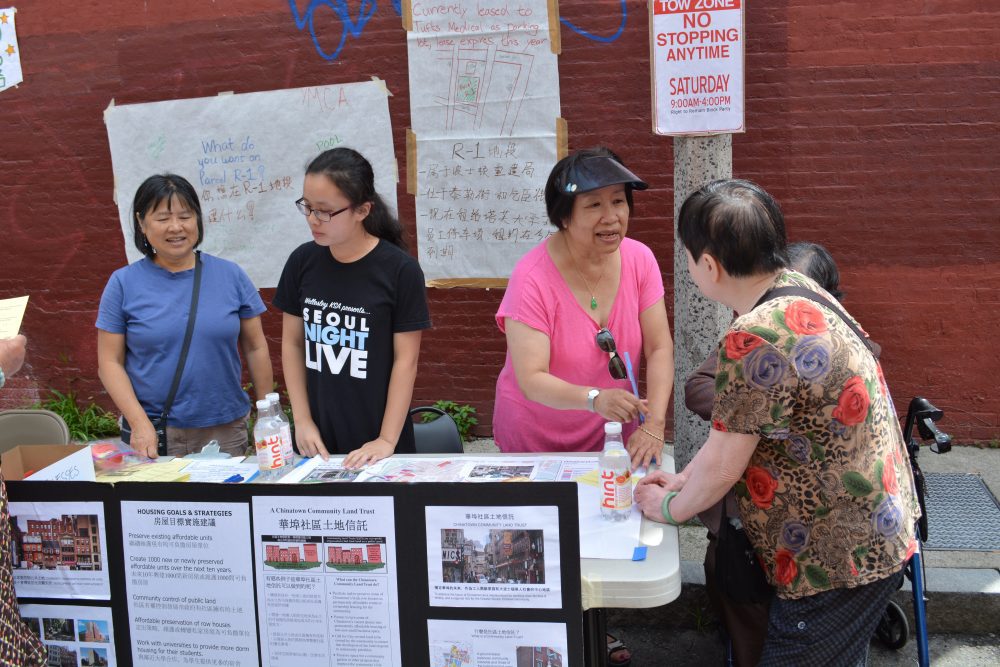
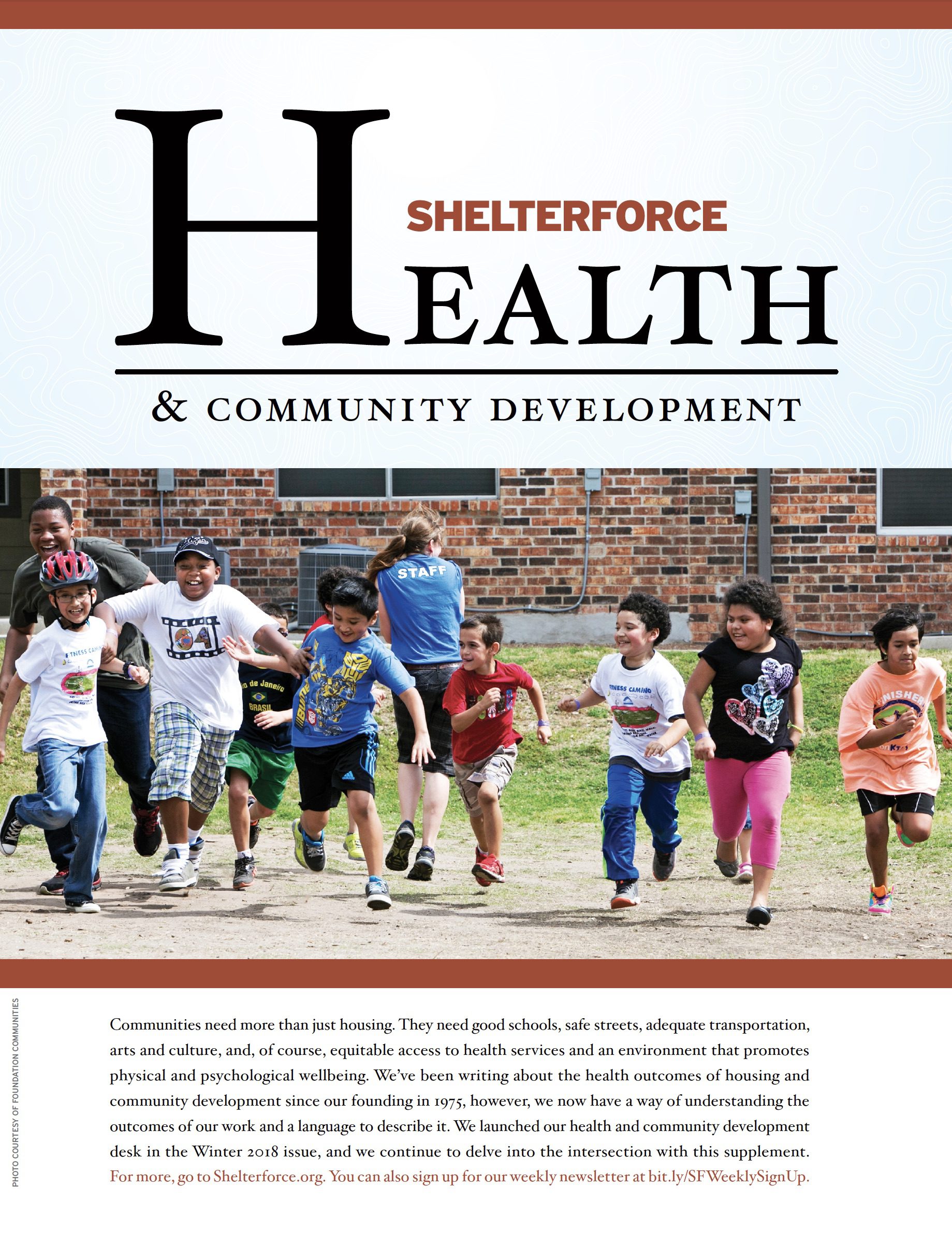
Comments